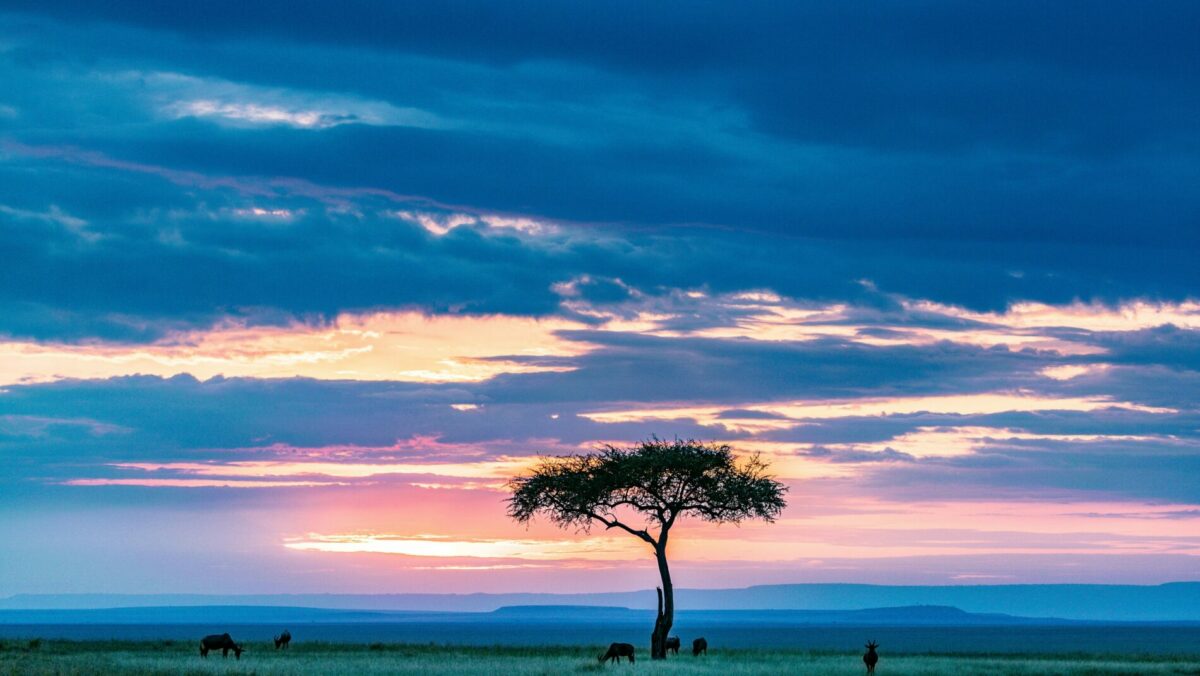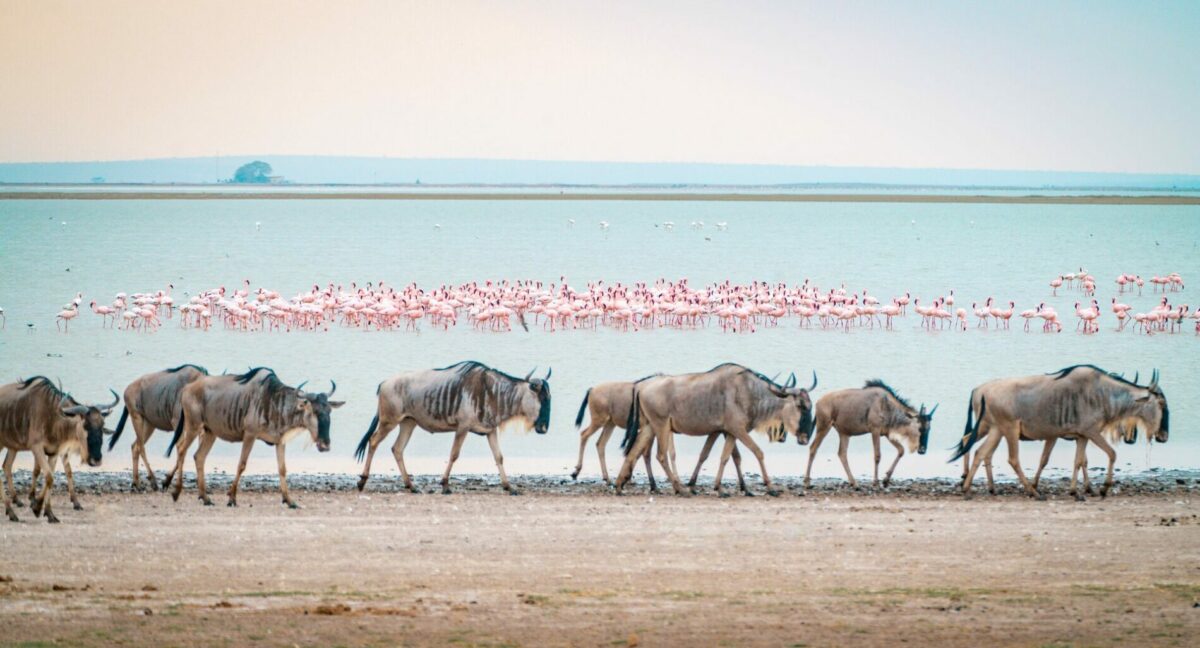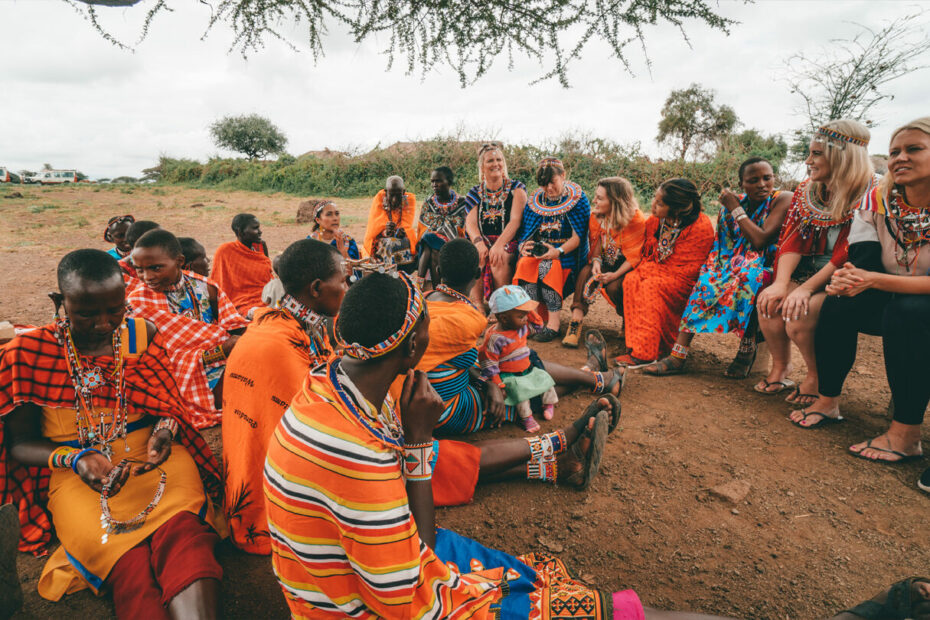Kenya is an incredible country that often doesn’t receive the attention it deserves! This East African nation boasts all of the Big 5 animals, and stunning landscapes that change as you travel across the country. Not forgetting iconic attractions like the Great Rift Valley and the expansive plains of Amboseli National Park. From its beautiful coastlines and bustling cities to its rugged safari parks, Kenya has a lot to offer, including many lesser-known but fascinating details. Let me introduce you to this stunning country. Whether you’re eager to explore the renowned Masai Mara or simply love learning intriguing facts, here are 11 captivating details about Kenya to enrich your knowledge. Ready to be inspired by facts about Kenya?
Facts about Africa
Country Name: Republic of Kenya
Formerly Known As: British Kenya
Official Languages: English and Swahili
Population: 54 million
Capital: Nairobi
Currency: Kenyan shilling
National Celebration: Jamhuri Day – December 12 (Independence Day)
Renowned For: The premier safari destination worldwide!
Wildlife: The Big Five (Elephant, Lion, Leopard, Buffalo, Rhino
1. Big Five
The term “Big Five” originated from early big game hunters, representing the five African animals they believed were most challenging to hunt on foot in Africa. The Big 5 animals include the African Elephant, Lion, Leopard, Buffalo, and Rhinoceros.
Elephant
The elephant is the world’s largest land animal. Some adult elephants grow 3 meters long. Male elephants, known as bull elephants, live alone. Females typically form groups led by a matriarch, surrounded by younger females and their young. Often seen as gentle giants, elephants are dangerous, occasionally charging at vehicles, humans, or other animals if they feel threatened.
Lion
The lion earns its title as the king of the jungle due to being the largest and the strongest land predator. Their natural prey consists of zebras, impalas, giraffes, and various herbivores, notably the wildebeest. Lions typically form pride, often around 12 individuals. Male lions are recognizable by their shaggy manes and larger size compared to females. While females take charge of hunting, males protect their pride. Although there have been instances of attacks on humans, lions generally exhibit calm behaviour and aren’t usually agitated by human presence.
Leopard
In contrast to lions, leopards are typically solitary creatures. They rank as the most elusive among the big five, often hunting during the night. The ideal moments to spot them are early mornings or at night, as they are more active then. In daylight, spotting these animals requires careful observation, as they often blend into the undergrowth or hide behind trees.
Buffalo
Among the big five, the buffalo is considered one of the most hazardous to humans. They exhibit strong protectiveness and territorial behavior, often charging at remarkable speeds when feeling threatened. Typically, buffalos gather in groups and extensive herds, spending their time grazing across the savanna and floodplains. When approached, dominant bulls take on a vigilant, aggressive stance, while other adults gather around the calves to shield them.
Rhino
Rhino in Kenya has become an endangered species Rhinoceroses face endangerment, and seeing it has become rare. There are two types: black and white rhinos. Interestingly, the white rhino’s name originates from the Dutch word “weid,” signifying its actual color, which is yellowish-grey. This refers to its broad mouth, facilitating grazing with its square jaw and wide lips. Conversely, the black rhino possesses a more pointed mouth, adept for consuming leaves from trees and shrubs. White rhinos, larger than black rhinos, are comparatively more prevalent.
- National Parks and Reserves
Ever heard of Masai Mara National Park and Amboseli National Park? Kenya has renowned safari spots with Amboseli offering incredible views of Tanzania’s Mount Kilimanjaro.
Do you know that Kenya boasts a total of 50 national parks and reserves? Managed by the Kenya Wildlife Service, this beautiful country has 23 national parks and 28 national reserves, safeguarding the indigenous wildlife against poaching and hunting.
Alongside the national parks and reserves, Kenya also shelters 4 national sanctuaries, 4 marine parks, and 6 marine reserves. That’s an extensive area dedicated to protecting wildlife – a truly remarkable feat!
- Kenya is home to 43 Unique languages and Dialects spoken across the country
In Kenya, English and Swahili are the primary languages spoken. English is the official language, while Swahili holds, the national language and is widely used across the nation.
Common phrases in Swahili include words like ‘Jambo,’ meaning hello, or ‘Habari,’ also a Swahili greeting. When traveling to Kenya try using these phrases with locals at whatever destination you travel to!
Kenya’s linguistic diversity extends beyond English and Swahili, encompassing over 43 languages and dialects. They are divided into three categories that include Bantu, Nilotic, and Cushite. Over 65% of the population comes from the Bantu community, 31% is Nilotic, and 4% represents the Cushite population.
4. Home of Remarkable Long-Distance Runners in the World

Kenya has produced the best marathon and long-distance runners, with the majority holding the current world records. This is the most remarkable fact about Kenya. They have celebrated icons such as Eluid Kipchoge, and Catherine Ndereba, and current World record breakers, such as Kelvin Kiptum, and Faith Kipyegon. This has led to the country enjoying global dominance in long-distance competitions. Also, the Great Rift Valley serves as both the playground and training hub for many of these runners. Kenya hosts some of the planet’s top long-distance runners. They choose this area for training due to its high altitudes and challenging terrain, which greatly enhances their abilities.” So, if Olympic aspirations drive you, this could be your training ground!
5. Wangari Maathai: First woman to win the Noble Peace prize
The first woman to win the Nobel Peace Prize was from Kenya, and since then 18 women have won the prize. Wangari Muta Maathai, a Kenyan figure, was an influential environmental, social, and political activist, earning the Nobel Peace Prize in 2004 for her significant impact on sustainable development, democracy, and peace. She established the green belt movement, resulting in the planting of over 51 million trees across Kenya. Among the 18 women Nobel Peace Prize laureates, Wangari Muta Maathai stands as one of only four Black women ever to achieve this prestigious honor.
6. Coffee and Tea – the most Valuable Export
In March 2021, Kenya exported coffee valued at around 4.56 billion Kenyan shillings, equivalent to over 40.2 million US dollars. It’s a substantial figure, although not quite on par with Colombia’s exports at 3.9 billion US dollars. Still, it’s a considerable volume of coffee – perhaps at least enough for a hundred cups! Colombia holds the crown as the coffee capital, but let’s give a round of applause for Kenya! Kenyan coffee and tea are recognized among the world’s finest, a fact you can’t ignore, with the UK being the biggest exporter.
7. Great Wildebeest Migration

Many believe the Great Migration is a one-time yearly event, but it’s an ongoing cycle, making it one of Kenya’s most intriguing natural wonders. The wildebeest, zebra, and antelope migrate in a continuous clockwise loop between Kenya and Tanzania. Kenya’s Masai Mara Nature Reserve stands as an ideal location to witness this phenomenal display.
As the animals are continuously on the move, certain months provide better opportunities to witness this renowned migration. July and the surrounding months represent the peak period, making it advisable to plan your trip to Kenya around that time for the best chance to experience this incredible phenomenon firsthand. This is a huge fact about Kenya that you’ll always enjoy.
8. The Great Rift Valley: A fact about Kenya
One of the most fascinating things about Kenya is the presence of the Great Rift Valley, extending from north to south. Also recognized as the East African Rift Valley, this geological wonder originated over 25 million years ago caused by tension within the earth’s crust. Spanning roughly 6500 kilometers in length and 60 kilometers in width, its expansive nature facilitated the formation of numerous lakes, fostering distinctive habitats for Kenya’s diverse wildlife.



